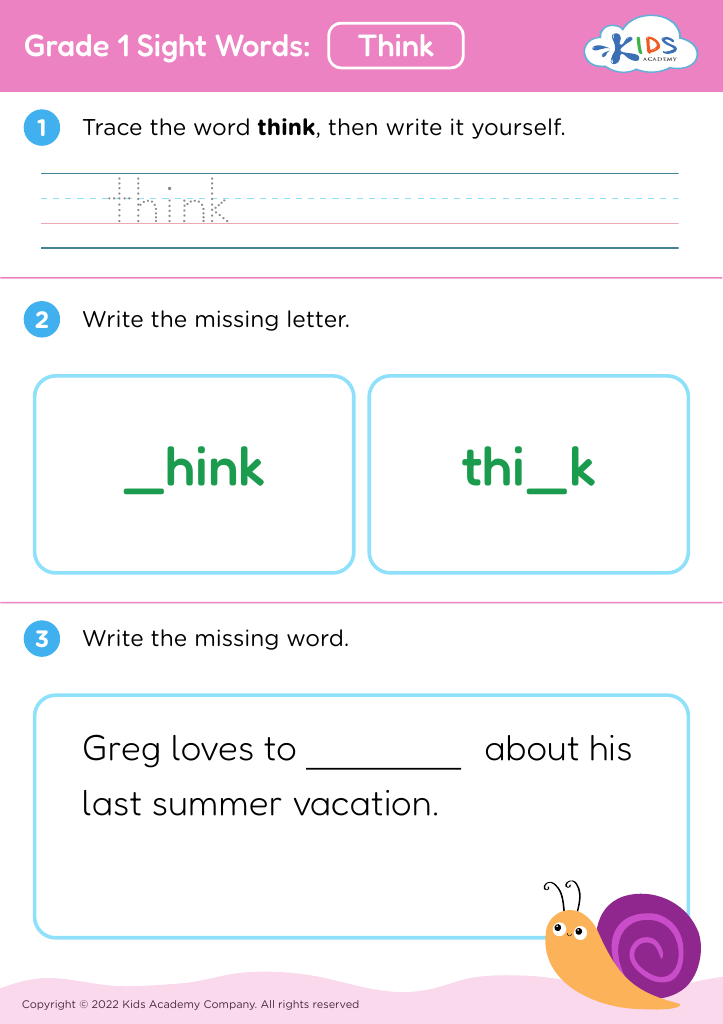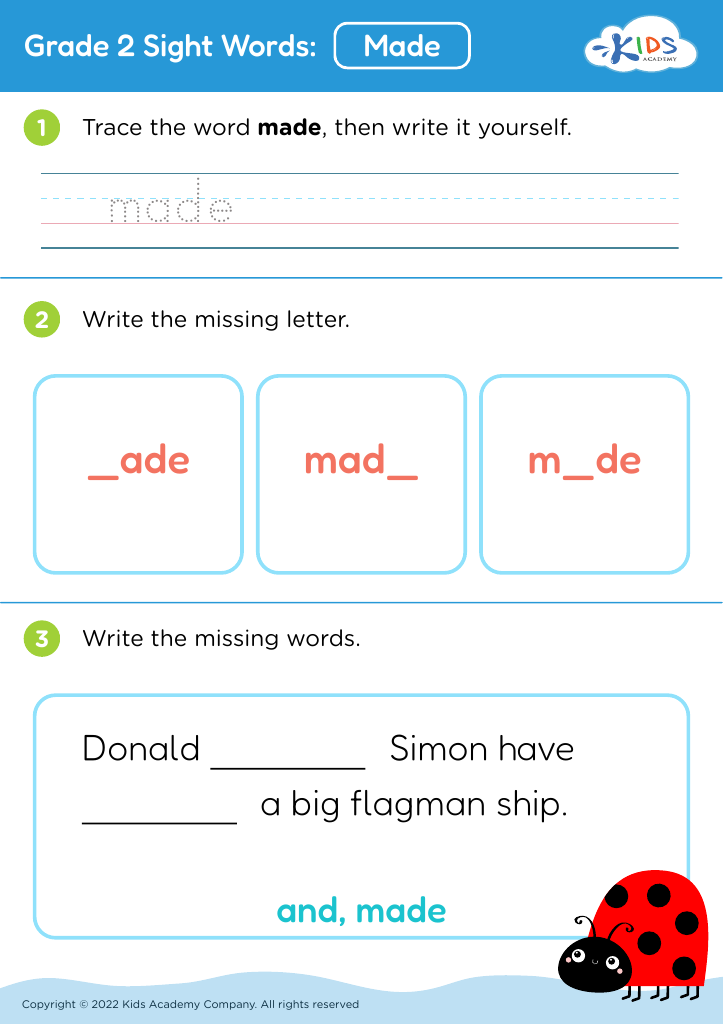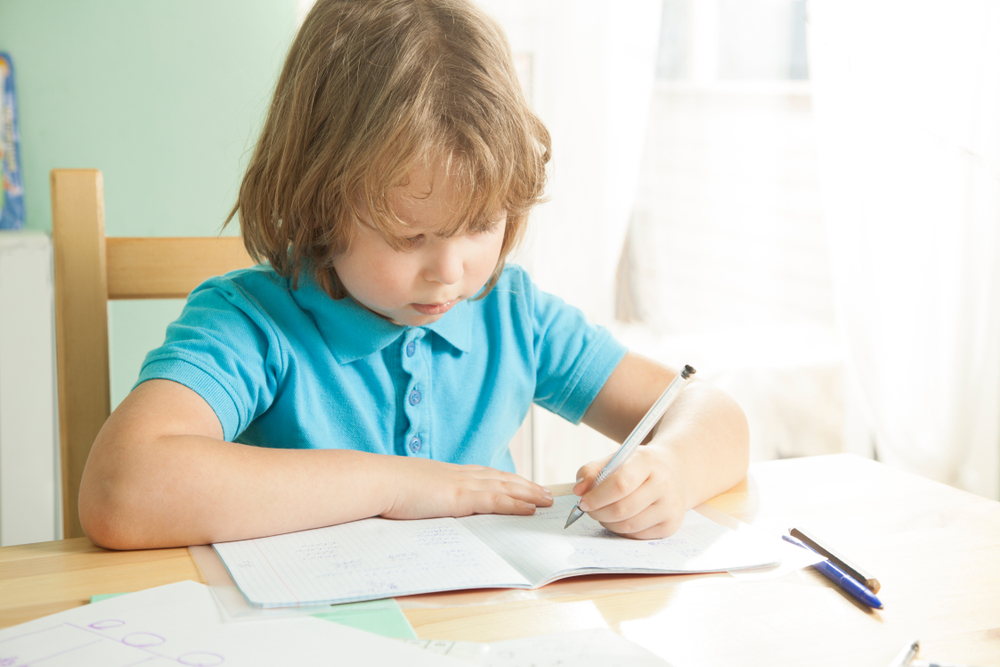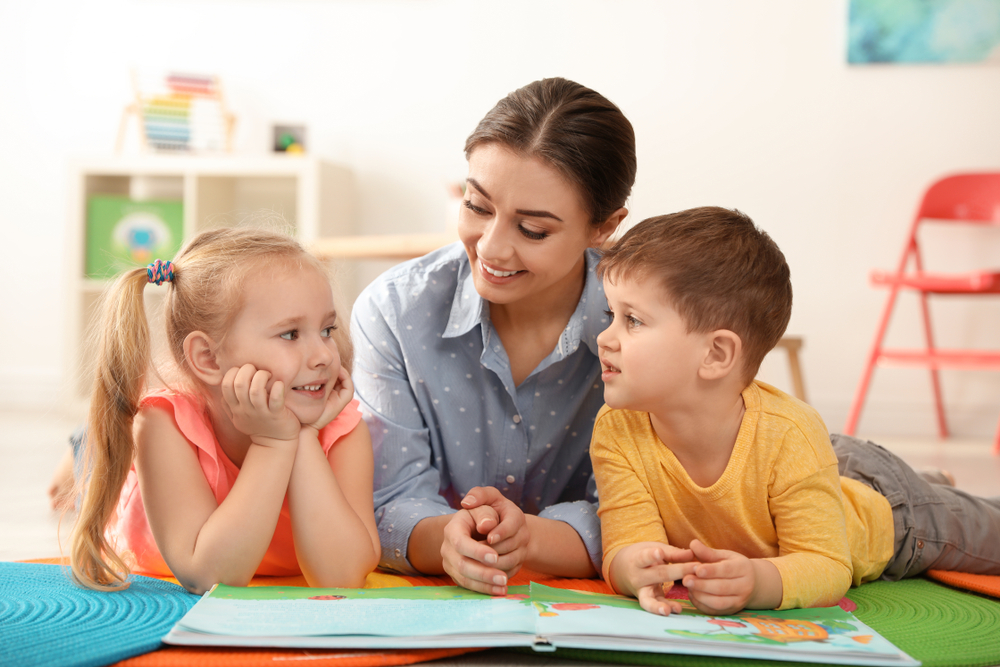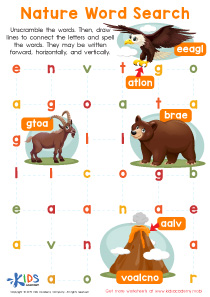Recognizing Patterns Sight Words Worksheets for 7-Year-Olds
3 filtered results
-
From - To
"Recognizing Patterns Sight Words Worksheets for 7-Year-Olds" by Kids Academy offers engaging, educational worksheets designed to boost your child's reading skills. These thoughtfully crafted activities help young learners identify and understand common sight words through fun, pattern-driven exercises. By focusing on repetition and visual strategies, children can effortlessly master essential vocabulary, build reading fluency, and enhance cognitive development. Each worksheet promises to make learning an enjoyable experience, ensuring your child remains motivated and confident as they progress. These worksheets are perfect for reinforcing classroom learning or practicing at home. Unlock your child's potential with Kids Academy today!
Recognizing patterns and sight words is crucial for 7-year-olds because both skills form the foundational building blocks for emergent reading and literacy. Sight words are common words that young readers need to recognize instantly without decoding, such as "the," "because," or "there." They often do not follow standard phonetic rules, so memorizing them is essential for efficient reading. When children quickly identify these words, they can devote more mental energy to comprehending the text's meaning rather than decoding each word, which accelerates reading fluency.
Pattern recognition, on the other hand, helps children understand how different words form syntactic and grammatical structures. For instance, recognizing visual patterns in words, like the '-ight' ending in "light," "night," and "sight" helps them decode new words more swiftly. Understanding numeric and geometric patterns strengthens logical thinking and problem-solving skills, applicable in broader academic contexts beyond reading. For example, recognizing patterns in mathematical sequences and spelling can aid in learning new concepts and enhance memory retention.
Incorporating both sight words and pattern recognition into early education helps build a strong, versatile foundation in reading and cognitive processing skills. As these skills improve, children become more confident, self-sufficient readers, better equipped for future academic success and lifelong learning.

